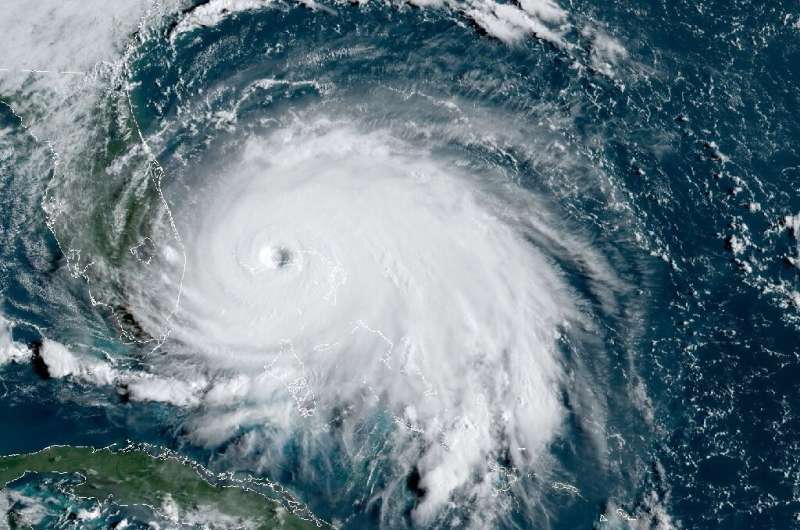A satellite image from September 2019 of Tropical Storm Dorian. US forecasters predict an 'above normal' 2020 Atlantic hurricane season
US forecasters on Thursday predicted an "above normal" Atlantic hurricane season and emergency officials said they were factoring the coronavirus pandemic into potential relief efforts.
Neil Jacobs, acting administrator of the National Oceanic and Atmospheric Administration (NOAA), said there was a 60 percent chance the season would be "above normal," with the possibility of three to six major hurricanes of Category 3 or higher.
There was a 30 percent chance of a "near normal" season and only a 10 percent chance of a "below normal" season, Jacobs told reporters on a conference call.
"NOAA's analysis of current and seasonal atmospheric conditions reveals a recipe for an active Atlantic hurricane season this year," Jacobs said.
NOAA's Climate Prediction Center forecast 13 to 19 named storms—those with winds of 39 miles per hour (63 kilometers per hour) or higher.
Six to 10 storms could become hurricanes with winds of 74 mph (119 kph) or higher and three to six could be major hurricanes of Category 3 or more with winds of 111 mph (179 kph) or higher, NOAA said.
An average hurricane season has 12 named storms, of which six become hurricanes and three become major hurricanes.
The NOAA predictions relate to how many storms are expected to form, but do not make any forecasts about landfall.
The Atlantic hurricane season officially extends from June 1 to November 30. There has been one tropical storm already in the Atlantic, Tropical Storm Arthur, the first named storm of the season.
There has been at least one Category 5 hurricane in the Atlantic Ocean in each of the past four years and an unusually active 2020 season would be the fifth in a row.
Make a plan
Carlos Castillo, the acting deputy administrator of the Federal Emergency Management Agency (FEMA), said the Atlantic hurricane season could be particularly challenging this year because of the coronavirus pandemic and urged people living in coastal regions to be prepared.
But Castillo said FEMA was well-equipped to respond to multiple natural disasters at a time and was adjusting its shelter plans, for example, to accommodate social distancing.
"The number of spaces will necessarily be decreased because of social distancing," the FEMA official said. "If you are in an evacuation zone you should plan to go, maybe, to friends who are outside the evacuation zone."
"COVID-19 may impact the disaster preparedness plan you had in place," Castillo added.
"Natural disasters won't wait, so I encourage you to keep COVID-19 in mind when revising or making your plan for you and your loved ones."
Hurricane Dorian, which reached Category 5 strength at one point, was the most destructive storm of last year, causing major damage and dozens of deaths in the Bahamas.
In 2018, Hurricanes Florence and Michael killed dozens of people and caused tens of billions of dollars in damage in North Carolina, South Carolina and Florida.
The previous year, 2017, was particularly devastating, with hurricanes Harvey, Irma and Maria wreaking deadly havoc throughout the Caribbean and Atlantic region.
© 2020 AFP























